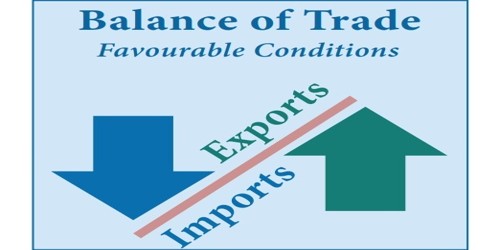
In an era where wealth accumulation is often at the forefront of financial planning, philanthropy has emerged as a vital component of modern wealth management strategies. Numerous high-net-worth individuals and families are recognizing the importance of giving back to society not only as a way to foster positive change but also as a means to enhance their financial legacy.
Understanding Philanthropy in Wealth Management
What Is Philanthropy?
Philanthropy refers to the act of promoting the welfare of others, typically through the donation of money, resources, or time to charitable causes. In the context of wealth management, philanthropy is integrated into financial planning as individuals seek to utilize their wealth to address social issues, support nonprofit organizations, and contribute to causes that resonate with their values.
Philanthropy and Wealth Management: A Symbiotic Relationship
The relationship between philanthropy and wealth management is inherently symbiotic. Philanthropy offers high-net-worth individuals opportunities to realize their values, create a meaningful impact, and secure potential tax benefits. Conversely, wealth management provides the tools and strategies necessary for effective giving, ensuring that charitable acts are aligned with the overall financial goals and legacy of the individual or family.
The Benefits of Integrating Philanthropy into Wealth Management

Incorporating philanthropy into wealth management strategies can yield numerous benefits, including financial, emotional, and societal advantages.
1. Enhancing Tax Efficiency
Charitable giving can be a tax-efficient strategy for high-net-worth individuals looking to reduce their taxable income. Various tax benefits associated with charitable contributions include:
Income Tax Deductions: Donors may claim deductions for the fair market value of assets donated to qualified charitable organizations, effectively reducing their taxable income.
Avoiding Capital Gains Tax: Donating appreciated assets instead of cash allows individuals to avoid capital gains taxes that would otherwise be incurred upon the sale of the asset.
Estate Tax Benefits: Charitable bequests can help reduce the taxable value of an estate, ultimately lowering estate tax obligations.
These financial incentives make philanthropy a compelling component of a comprehensive wealth management strategy.
2. Establishing a Lasting Legacy
Integrating philanthropy into wealth management allows individuals to establish a lasting legacy that reflects their values and priorities. By supporting causes important to them, donors ensure that their influence extends beyond their lifetime. This legacy can be perpetuated through family foundations, donor-advised funds, or charitable trusts, enabling future generations to carry on the family’s philanthropic mission.
3. Strengthening Family Bonds
Philanthropy can serve as a unifying force within families, fostering discussions about values, goals, and collective aspirations. Engaging in charitable activities together creates shared experiences and enhances family cohesion. Philanthropic initiatives can also help educate younger family members about financial responsibility and the importance of giving back, instilling these values in future generations.
4. Improving Personal Fulfillment
Giving back can lead to a deep sense of fulfillment and purpose. Many individuals find that philanthropic activities increase their overall life satisfaction. Supporting causes they are passionate about allows them to make meaningful contributions to society, reinforcing their values and beliefs.
5. Leveraging Community Impact
By supporting local and global organizations, philanthropists can drive positive change in their communities. Whether through funding vital services or investing in innovative projects, philanthropy addresses pressing social challenges and contributes to social cohesion. This community engagement enriches the lives of others while also enhancing the donor’s connection to the community.
Strategic Approaches to Philanthropy in Wealth Management
To maximize the impact of philanthropic efforts, individuals in wealth management should consider various strategic approaches. Implementing these strategies offers a structured way to give while aligning with financial goals.
1. Establishing a Giving Strategy
A formal giving strategy outlines the goals and objectives of philanthropic efforts. Key steps in creating a giving strategy include:
Identifying Values and Causes: Determine the values that matter most to you and the causes you wish to support. This may include education, health care, environmental protection, or social justice.
Setting Goals: Establish clear philanthropic goals that align with your overall financial objectives. Goals may include specific funding targets, types of organizations to support, or desired impacts.
Choosing the Right Vehicles: Explore various giving vehicles, including direct donations, donor-advised funds, private foundations, or charitable trusts. Each option offers distinct advantages and tax implications.
2. Engaging in Strategic Philanthropy
Strategic philanthropy involves utilizing data and analysis to maximize the effectiveness of charitable giving. This approach ensures that donations yield measurable outcomes. Key elements of strategic philanthropy include:
Researching Organizations: Conduct thorough due diligence on potential recipients to ensure that they have a strong track record and are aligned with your values.
Evaluating Impact: Monitor and assess the outcomes of philanthropic investments. This may involve setting benchmarks, collecting data, and evaluating performance against objectives.
Adjusting Approaches: Be open to adapting your philanthropic approach based on results and feedback. Flexibility allows donors to refine their strategies for greater effectiveness.
3. Involving Family Members
Incorporating family members into your philanthropic vision can strengthen family ties and create a collaborative giving environment. Consider the following steps:
Family Meetings: Organize regular meetings to discuss philanthropic interests, share ideas, and make informed decisions together.
Encourage Participation: Involve family members in charitable activities or volunteering to foster a sense of ownership and connection to the causes you support.
Create a Family Giving Plan: Develop a structured plan that outlines how the family will engage in philanthropy, including roles and responsibilities.
4. Leveraging Technology and Data
Modern technology offers efficient tools for philanthropy, making it easier for individuals to research organizations, track donations, and measure impact. Consider utilizing the following resources:
Grant Management Software: Use software to streamline the grant application and reporting processes for foundations or donor-advised funds.
Crowdfunding Platforms: Leverage online crowdfunding platforms to support specific causes or projects, allowing for broader community engagement in philanthropic efforts.
Data Analytics: Employ data analysis to evaluate the effectiveness of charitable contributions and identify opportunities for improvement.
Case Studies in Philanthropy and Wealth Management

Examining real-world examples of successful philanthropic endeavors can provide valuable insights for individuals looking to incorporate charity into their wealth management strategy.
Case Study 1: The Gates Foundation
The Bill and Melinda Gates Foundation is a prominent example of strategic philanthropy. With a focus on global health, education, and poverty alleviation, the foundation has made significant investments in innovative solutions. By using data-driven approaches to measure effectiveness, the foundation has achieved remarkable impacts, including reducing child mortality rates and improving access to education in underserved areas.
Case Study 2: The Rockefeller Foundation
The Rockefeller Foundation has a long-standing legacy of philanthropy, with initiatives that span a wide range of issues, including health, food security, and environment. Through strategic partnerships with governments and organizations, the foundation has successfully tackled complex global challenges. They exemplify the power of coordinated efforts to achieve sustainable and scalable results.
Case Study 3: Individual Philanthropists
Many wealthy individuals are utilizing donor-advised funds to streamline their philanthropic giving. For instance, individuals contributing to funds may designate grants to charities of their choice while retaining the ability to advise on the fund’s investments. This flexibility allows for personalized giving while reaping tax benefits.
Challenges and Considerations in Philanthropic Wealth Management
While philanthropy offers numerous benefits, it is essential to address challenges that may arise. Understanding these obstacles can help individuals navigate the philanthropic landscape more effectively.
1. Potential for Burnout
Philanthropic efforts can be demanding, especially for those heavily involved in multiple initiatives. Donors may experience fatigue, leading to disengagement. It is crucial to strike a balance and ensure that giving remains a fulfilling experience rather than a burden.
2. Navigating Legal Complexities
Philanthropy is often accompanied by legal and regulatory considerations, particularly regarding tax implications. Individuals engaging in philanthropic activities should seek professional legal and tax advice to ensure compliance with regulations, maximize benefits, and avoid potential pitfalls.
3. Ensuring Impact
Measuring the outcomes of philanthropic efforts can prove challenging. Different organizations may define success in varying ways, making it essential for donors to establish clear metrics and continually evaluate how their contributions are making a difference.
4. Aligning Personal and Institutional Goals
For individuals involved in family foundations or larger philanthropic entities, aligning personal aspirations with institutional goals can present challenges. Establishing open communication and joint decision-making can help mitigate potential conflicts and ensure that goals are harmonized.
Conclusion

The role of philanthropy in modern wealth management cannot be overstated. As individuals seek to create meaningful impacts in their communities, philanthropy offers a multifaceted avenue for social and financial enrichment. By integrating philanthropy into wealth management strategies, high-net-worth individuals can enhance their tax efficiency, establish lasting legacies, strengthen family bonds, and promote positive societal change.
Strategic approaches to philanthropy, including establishing a giving strategy, involving family members, leveraging technology, and continuously evaluating impact, can maximize the benefits of charitable contributions. Despite the challenges that may arise, philanthropy remains a powerful tool for aligning financial goals with personal values.
As the landscape of wealth management continues to evolve, those who embrace philanthropy as a core component will not only enhance their own financial legacies but also contribute to a brighter future for all.








